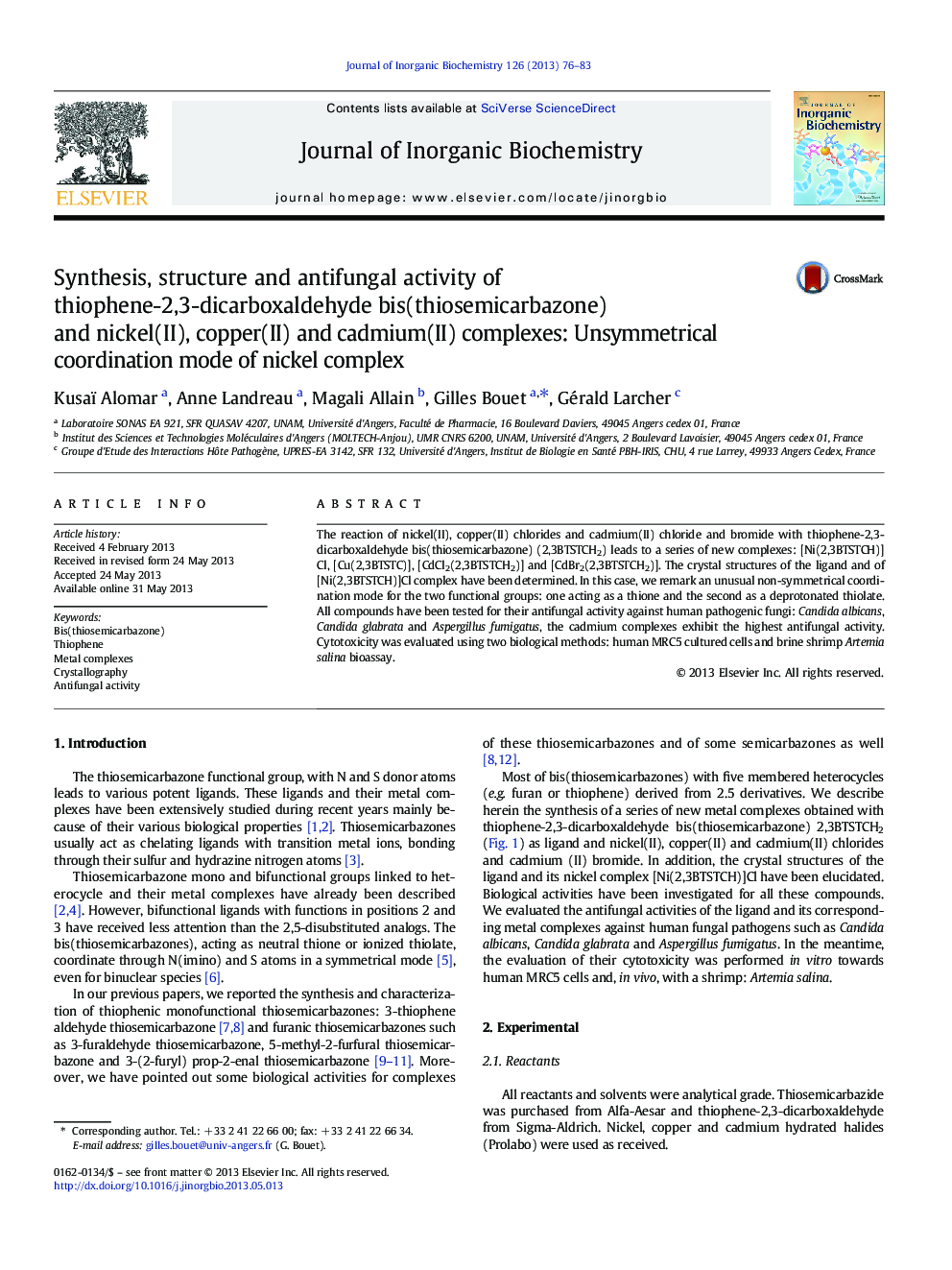| کد مقاله | کد نشریه | سال انتشار | مقاله انگلیسی | نسخه تمام متن |
|---|---|---|---|---|
| 1317561 | 1499461 | 2013 | 8 صفحه PDF | دانلود رایگان |

• Complexes with 2,3-disubstituted thiophene.
• Unsymmetrical coordination (thione and deprotonated thiolate) for Ni(II) complex.
• Antifungal activity of cadmium complexes.
• Low toxicity of cadmium complexes towards cultured cells and Artemia salina.
The reaction of nickel(II), copper(II) chlorides and cadmium(II) chloride and bromide with thiophene-2,3-dicarboxaldehyde bis(thiosemicarbazone) (2,3BTSTCH2) leads to a series of new complexes: [Ni(2,3BTSTCH)]Cl, [Cu(2,3BTSTC)], [CdCl2(2,3BTSTCH2)] and [CdBr2(2,3BTSTCH2)]. The crystal structures of the ligand and of [Ni(2,3BTSTCH)]Cl complex have been determined. In this case, we remark an unusual non-symmetrical coordination mode for the two functional groups: one acting as a thione and the second as a deprotonated thiolate. All compounds have been tested for their antifungal activity against human pathogenic fungi: Candida albicans, Candida glabrata and Aspergillus fumigatus, the cadmium complexes exhibit the highest antifungal activity. Cytotoxicity was evaluated using two biological methods: human MRC5 cultured cells and brine shrimp Artemia salina bioassay.
The reaction of nickel(II) with thiophene-2,3-dicarboxaldehyde bis(thiosemicarbazone) (2,3BTSTCH2) gave [Ni(2,3BTSTCH)]Cl complex with an unusual non-symmetrical coordination mode for the two functional groups: one as a thione, the second as a deprotonated thiolate. The cadmium complexes showed the highest antifungal activity with low toxicity towards human MRC5 cultured cells and brine shrimp Artemia salina.Figure optionsDownload as PowerPoint slide
Journal: Journal of Inorganic Biochemistry - Volume 126, September 2013, Pages 76–83